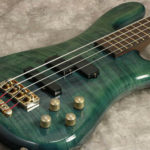Tuning Your Guitar
Keeping your guitar in tune is very important. There are different methods and devices to help you tune your strings.
At first this may seem tedious or even intimidating, but eventually it will become mindless and normal. This is important because it sets your strings at the right pitch, to produce the right sounds. If it is not tuned right, it wont sound right, even if you play right.
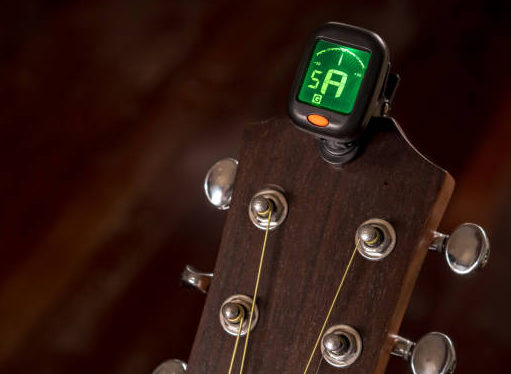
There are so many ways to tune your guitar, but if you are a beginner standard tuning is best.
EADGBE
With such a wide variety of tuners available, the task of tuning your guitar is easy to do.
I prefer tuning by ear, but there are many devices available:
Clip-on Tuners
Foot Pedal Tuners
Standalone Tuners
Phone Aps
Tuning a guitar by ear to another guitar that is already in tune, is a common method. There are plenty of phone aps, that play each note for you to match.
The easiest method for tuning a guitar is by using an electronic tuner.These allow you to tune each string individually to the tuner, by indicating whether the notes are sharp or flat. An indicator will help you find the exact pitch. Electronic tuners are very inexpensive and easy to use.
If you have new strings there is a higher chance of the string breaking.
New strings will need to be “worked in” after each fitting. This is especially helpful if you are fitting one new string at a time and would like the string to stay in tune before fitting the next string. Strings should be stretched by pulling them away from the fretboard a little. The string can also be stretched in sections along the string by stretching the string between the thumb and fingers of your right hand. After working a string in, it should maintain its tune and only require minor adjustments.
Tuning your guitar in a quiet room, will help you hear the pitch and tone of each note. Some people prefer tuning in their bathroom, since it has the best acoustics in the house.
It is also important to keep your guitar at a consistent temperature. Moving your instrument from a cold room to a warmer room, can effect the pitch of the strings and require re-tuning. The guitar needs to be acclimated to the temperature you will find on stage. If your in an air conditioned room, before a performance, dont have your guitar with you.
Always tune your guitar each time you play. Every gig, practice, or if you just want to noodle about, your guitar needs to be perfectly in tune. You’ll be surprised how guitars go out of tune easily, no matter how expensive your tuning pegs are.
Protect your guitar. It is a precision instrument. Leaving it to extreme temperature changes, dropping it, or bumping it about, will have an effect on its wood. These can cause warping or breakage that can cause your guitar to be out of tune even if your tuner “says” it is.
Tune UP. Whenever you tune your guitar, always start below the desired pitch. For example on the E string, detune your guitar to D or E-flat, then tune up. This will reduce the chances of your guitar going flat during a performance or practice session.
Train your ear. When you can, use a tuner for the first string, then try to tune the rest. It won’t be perfect at first, but this can be a good practice.
Get your guitar properly intonated. There will be times when your tuner says everything is in tune, and it might even sound like it is to you. But once you start playing, everything just goes out of whack. Maybe your instrument needs to be properly intonated? A properly set up guitar will give you perfect notes all across the fingerboard, so make sure your guitar is properly intonated before you plan on using it for a performance or gig.
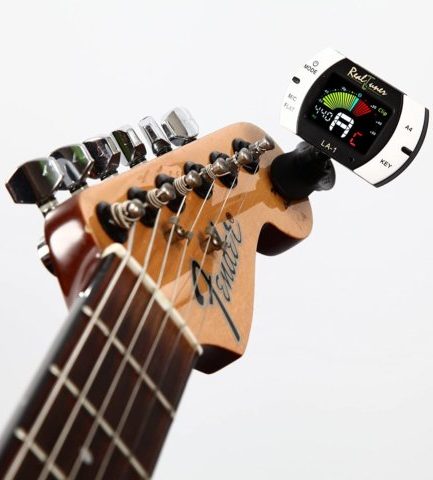
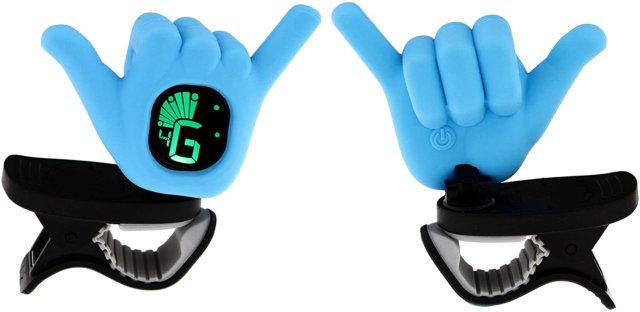
2Eleven Music Hang Loose Shaka Tuner
Fast & accurate, easy one button operation
Clear two-color changing backlight display
Silicon padding for a firm grip without damaging your instrument’s finish
There are many alternate tuning methods; Drop D tuning produces a lower, more growly sound, which is common in metal music. Standard D tuning is simply dropping standard E tuning by one whole tone on each string. One of the benefits of standard D tuning, as opposed to other alternate tunings, is that all the same chord patterns still work. You’ve only dropped things down by a whole step.
Keeping that in mind, in standard D, if you play an open D major, that will now become a C major. Likewise, G becomes F, A becomes G, etc etc. Definitely something you’ll have to think about, unless you’re the only person playing.
E Standard Tuning: E A D G B E
D Standard Tuning: D G C F A D
When using alternate tunings you should setup your guitar for that tuning. You can adjust the action and string gauge for that tuning. You will get a better tone out of a heavier gauge string, in Drop D.
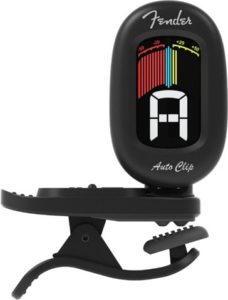
Fender Auto Clip Chromatic Tuner
Compact 440Hz chromatic tuner
Smart auto power; switches on when attached to headstock
Auto shut-off after 5 minutes for longer battery life




